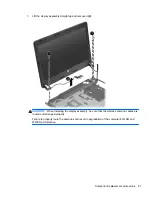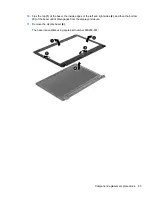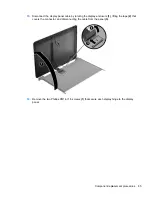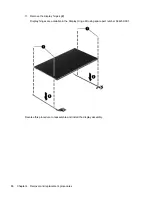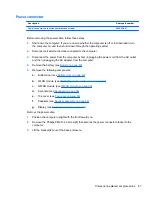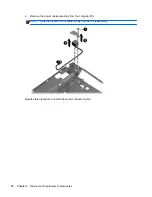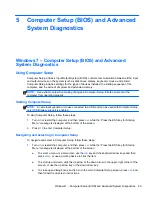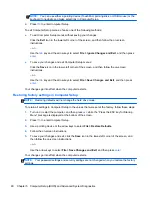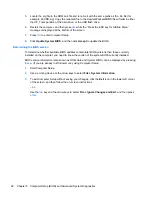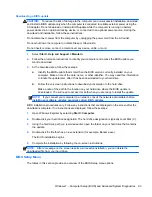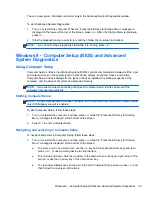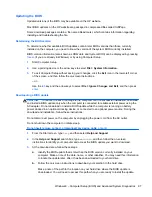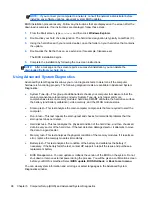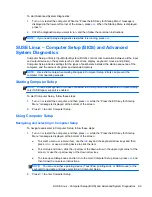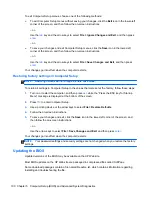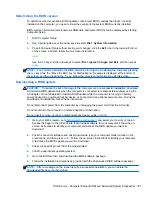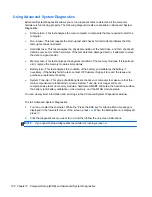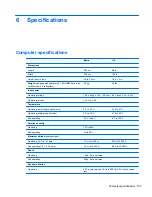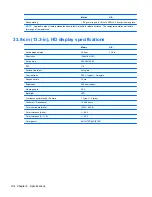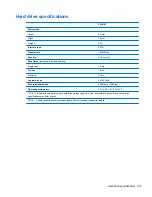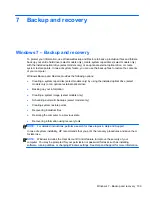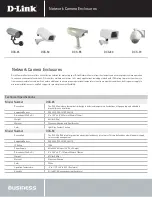
Main menu
Select
To do this
System information
●
View and change the system time and date.
●
View identification information about your computer.
●
View specification information about the processor,
memory size, and system BIOS.
Security menu
Select
To do this
Administrator password
Control access to Setup Utility.
Power-on password
Control access to your computer.
Diagnostics menu
Select
To do this
Primary Hard Disk Self Test
Run a quick or comprehensive self-test on the hard drive.
Memory Test
Run a diagnostic test on the system memory.
Using Advanced System Diagnostics
Advanced System Diagnostics allows you to run diagnostic tests to determine if the computer
hardware is functioning properly. The following diagnostic tests are available in Advanced System
Diagnostics:
●
Start-up test—This test analyzes the main computer components that are required to start the
computer.
●
Run-in test—This test repeats the start-up test and checks for intermittent problems that the
start-up test does not detect.
●
System Tune-Up—This group of additional tests checks your computer to make sure that the
main components are functioning correctly. System Tune-Up runs longer and more
comprehensive tests on memory modules, hard drive SMART attributes, the hard drive surface,
the battery (and battery calibration), video memory, and the WLAN module status.
●
Hard disk test—This test analyzes the physical condition of the hard drive, and then checks all
data in every sector of the hard drive. If the test detects a damaged sector, it attempts to move
the data to a good sector.
●
Memory test—This test analyzes the physical condition of the memory modules. If it reports an
error, replace the memory modules immediately.
●
Battery test—This test analyzes the condition of the battery and calibrates the battery if
necessary. If the battery fails the test, contact support to report the issue and purchase a
replacement battery.
94
Chapter 5 Computer Setup (BIOS) and Advanced System Diagnostics


